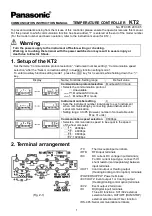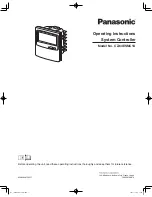
A triangle wave applied to a single channel also sweeps out a ring (or portion
thereof, depending on the amplitude) on the Poincaré sphere, but the polarization
change along that path occurs at a constant speed determined by the frequency.
The final trace over several periods will look the same as that of a sine wave.
If a square wave is applied to a single channel, the polarization will switch
periodically between two polarization states determined by the amplitude of the
wave. The frequency determines how long the polarization stays in each state.
Figure 14-17 show the traces for a square wave with amplitude 30V and
frequency 5 Hz, applied to channels 1-4, respectively.
Figure 14 Square wave with A=30V, f=5Hz on channel 1
Figure 15 Square wave with A=30V, f=5Hz
on
channel
2
Figure 16 Square wave with A=30V, f=5Hz on channel 3
Figure 17 Square wave with A=30V, f=5Hz
on
channel
4
Document #: GP-UM-PMD-1000-21
Page 35 of 122
















































